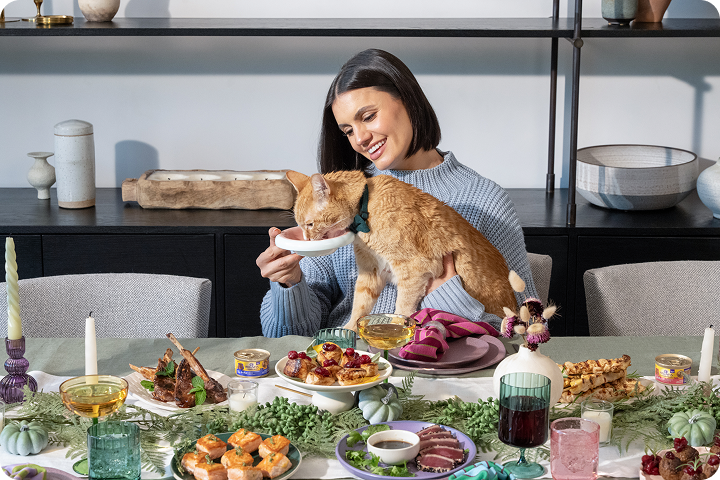Live Well
The official Blog of Wellness Natural Pet Food
Welcome to your guide for all things pet. At Live Well, we’re giving our pet parents everything they need to show their pets the love and care they deserve—from articles on pet health, behavior and nutrition, to special offers on our Wellness products—we’ve got you covered.
Filter By
Pet
Topic
Tips for Pet-Friendly Travel
Gearing up for summer travel with your pup?? At Wellness Pet we want pet parents to enjoy a life of wellbeing with their furry friends, which includes time spent traveling together. Take a moment to relax and feel prepared with these tips to keep your routine in-check and help you both stay happy and healthy […]
Annual Pet Holidays 2023
Pet holidays have become increasingly popular over the years, with many pet owners eager to celebrate their furry friends in special ways. While there are holidays dedicated to pets of all kinds, dogs and cats, being the most common household pets, tend to get the most attention. In this post, we’ll explore some of the […]
What Is The Best Dry Dog Food For My Dog?
As a dog owner, you want to make sure your best friend is getting all the nutrition they need to maintain optimum health. However, there are dozens of types of dog food on the market, and trying to figure out which is truly the best for your pet can be overwhelming. How can you choose […]
Ultimate Guide: How Much Food To Feed Your Dog
How much dry dog food? Correctly feeding your canine companion is an integral part of pet ownership. A proper diet gives your dog the energy they need to live their best life and supports the five signs of wellbeing. However, figuring out how much to feed your pet can be confusing. There are many types […]
Finding The Perfect Dog and Cat Food Toppers For Your Pet: Tips From Veterinarians
As pet parents, we all want our cats and dogs to have the best possible nutrition to help them thrive. When fed appropriately, a dog and cat food topper can be a fun way to supplement your pet’s nutrition and give them a variety of flavors and textures to enjoy. But what are toppers, and […]
The Best Allergy Nutrition Support For Dogs
Allergy Support for Dogs Our dogs provide us with endless hours of entertainment, companionship, and love, and ask for very little in return. So, when we see them struggle with allergies, whether in the form of regular gut upset, or we hear them scratching themselves raw all night long, it’s no wonder we want to […]
Is Your Cat a Couch Potato? 5 Ways to Give Her Mental and Physical Stimulation
Cats do nap a lot. But extended napping could be sheer boredom. Contrary to the assertion that they are aloof and independent, cats do like to engage with their favorite people. Here are some quick fixes to offer your kitty both mental and physical stimulation and, at the same time, boost your quality time together. […]
What Can Be Mixed With Your Dog’s Dry Food?
What can be mixed with dry dog food? Dry dog food is formulated with all the nutrients your dog needs to thrive, but this doesn’t mean your pup’s meals have to be boring. So, what can be mixed with dry dog food, and can you mix wet and dry dog food? It turns out there […]
The Best Large Breed Puppy Food
Best Dog Food For Large Breed Puppies If you recently adopted a large breed puppy, get ready for a wonderful rollercoaster fun ride as your rambunctious new family member discovers different things with boundless energy and delight. In terms of nutrition, puppyhood is an important life stage to ensure the puppy grows up to be a […]
The Best Puppy Food For A Sensitive Stomach
Best Puppy Food For Sensitive Stomach Puppies grow quickly, building muscles and bones, developing organs and strengthening vital systems such as their immunity and brain function. During this physical development they are facing important first-time encounters with food and experiences. With so much going on, it’s not uncommon for a new pup to occasionally get […]
How To Choose The Best Protein For Your Dogs
Best Protein For Dogs You already know that protein is essential for your dog wellbeing. But that’s not enough – do you know what kind of protein works best with your pooch and how much protein you should feed him? Let’s break down all of these questions and take a good look at choosing the […]
Is Grain-Free Dog Food Bad For Dogs?
Is Grain Free Bad For Dogs? With so many pet food brands, recipes and flavors available, selecting the best dry dog food is tough. One feature that many pet parents have historically used is by determining if a product is a grain free or non grain free dog food. But, what does that mean for […]
